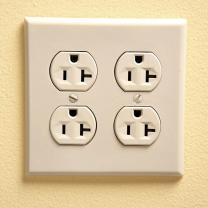What to consider when designing a new home?
Designing your dream home is an exciting endeavor, but it also requires careful planning and consideration of various factors to ensure that the end result aligns with your vision and lifestyle. Here are key considerations for designing a new home:
1. Budget:
- Determine your budget early in the design process. This will influence many of your decisions, from the size of your home to the materials and finishes you choose.
2. Location:
- The location of your home is paramount. Consider factors such as proximity to work, schools, amenities, safety, and the overall neighborhood vibe.
3. Lifestyle and Needs:
- Assess your current and future lifestyle needs. Think about the number of bedrooms, bathrooms, and any specific spaces like a home office, gym, or entertainment room.
4. Design Style:
- Define your design style, whether it's modern, traditional, contemporary, farmhouse, or a unique blend of styles. Your home's design should reflect your personal taste.
5. Energy Efficiency:
- Consider incorporating energy-efficient features into your design to reduce utility costs and minimize your environmental impact. This may include solar panels, insulation, and energy-efficient appliances.
6. Flow and Layout:
- Plan the layout to ensure a logical flow between rooms. Think about how you will move through the space and how different areas will be connected.
7. Natural Light and Ventilation:
- Maximize natural light and ventilation by positioning windows strategically. Consider large windows, skylights, and open floor plans to achieve this.
8. Outdoor Living Spaces:
- Think about outdoor spaces, such as patios, decks, and gardens. These areas can be an extension of your living space for relaxation and entertainment.
9. Material Selection:
- Choose building materials and finishes that align with your design style, budget, and maintenance preferences. Consider factors like durability and ease of cleaning.
10. Storage Solutions:- Adequate storage is crucial. Plan for ample closet space, built-in storage, and functional cabinets to keep your home organized.
11. Future Growth:- Anticipate future needs and potential changes in your household, such as accommodating a growing family or aging in place. Design your home with flexibility in mind.
12. Technology Integration:- Consider incorporating smart home technology for security, climate control, lighting, and entertainment systems. Plan for the necessary wiring and infrastructure.
13. Builder and Contractor Selection:- Choose a reputable builder or contractor with a track record of quality work. Obtain multiple quotes and check references before making a decision.
14. Permits and Regulations:- Be aware of local building codes and regulations. Ensure that your design complies with zoning laws, permits, and any homeowners' association guidelines.
15. Interior and Exterior Aesthetics:- Pay attention to both interior and exterior aesthetics. The curb appeal and interior design should reflect your style and preferences.
16. Sustainability and Eco-Friendly Features:- Consider eco-friendly features like rainwater harvesting, energy-efficient appliances, and sustainable building materials to reduce your ecological footprint.
17. Long-Term Maintenance:- Think about the long-term maintenance requirements of your design choices. Opt for low-maintenance materials when possible.
18. Accessibility:- Design your home to be accessible for all occupants, including those with mobility challenges. This may involve wider doorways, ramps, and accessible bathroom features.
19. Neighborhood and Resale Value:- Keep an eye on the neighborhood's property values and design your home with resale value in mind, even if you plan to stay for the long term.
20. Professional Guidance:- Consider working with an architect, interior designer, or design-build firm to help you turn your vision into reality while navigating the complexities of home design and construction.
Remember that designing your dream home is a highly personal process, and your preferences should take center stage. Take your time to plan and research each aspect thoroughly to create a home that reflects your unique lifestyle and vision.











